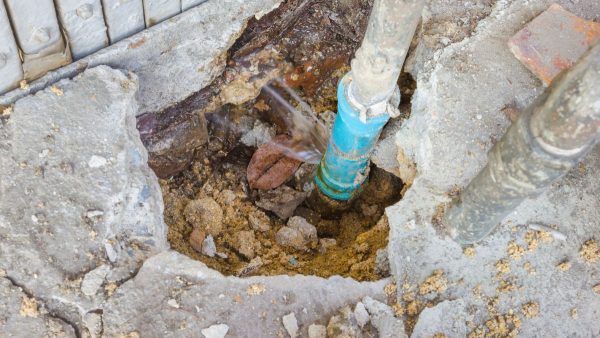Strategies for identifying and repairing below-ground leaks

Below-ground leaks can lead to damaged flooring and more serious foundation issues. To add to your commercial building maintenance plan, here are some strategies for identifying and repairing them.
Common causes of below-ground leaks
As commercial buildings age, they are more susceptible to corrosion of the walls and foundation. If built with poor materials or faulty installation, there is also a risk of more below-ground leaks because of foundation issues or burst pipes.
The soil beneath and surrounding the commercial building can erode and shift over time, leading to water leaks. Intrusion of tree roots can damage water pipes as well.
Techniques for identifying below-ground leaks
Visual inspection and surface indicators
There are usually indicators of a below-ground leak you can first spot with a visual inspection. You may see water pooling on the ground or wet spots in landscaped areas surrounded by drier areas.
Some indicators may be found in the water, such as rusty-colored water or lower water pressure. Brown grass spots may be a sign that an irrigation pipe is busted.
Acoustic listening devices
Using an acoustic listening device, you can hear water escaping through a pipe leak. Larger leaks will be louder. This device can also help you pinpoint where the leak is coming from.
Thermal imaging cameras
With a thermal imaging camera, you can see the rise in temperature of the concrete and soil around a leak.
Tracer gas
For this method, tracer gas, a mixture of hydrogen and nitrogen, is injected into a pipe, and a gas detector is used to pinpoint where it leaks.
Effective methods for repairing below-ground leaks
Traditional excavation and replacement
This method is common and involves the damaged pipes getting excavated and replaced.
Trenchless technology: pipe relining and bursting
Damaged pipes can be replaced with trenchless technology, which sends a head through the old pipe and bursts it open as the new pipe is dragged into place.
Sealing and coating techniques
Hydraulic cement can be used where below-ground leaks have caused cracks in concrete. Sealant epoxies can be applied to the pipe itself, as well as liners or wraps.
If below-ground water leaks have damaged your concrete, contact JK Industries for repair and replacement services.
